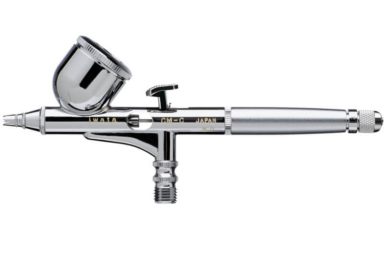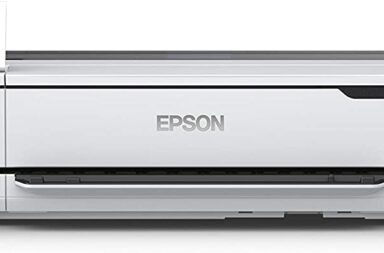Many talented people with an interest in graphic design can’t simply pick up and go to art school on a whim. However, nowadays it’s not necessary to go a traditional college or university to get a world class education. With the rise of online education and other tutorial resources, getting a rich education in graphic design is more possible than ever.
Practicing graphic design as a profession may require experience and a certain set of skills, but you don’t necessarily need a college degree. Even better, your existing skills and experiences can be a great place to start. Even if you have no formal training, you may still have the technical know-how to get you started in a career as a professional designer.
It’s important to note there’s a great deal of skill and critical thinking involved in graphic design, so getting to that point isn’t easy. However some of the following tips can help get you started.
#1 – Identify your Skills and Experience
Before you start any path towards becoming a professional graphic designer, make a list of your current skills and experience. This will help you to fill in the gaps of your knowledge and better prepare you for a full time job in the field.
These skills could include things such as:
- Experience with specific software packages, e.g.:
- Adobe Creative Cloud
- Adobe Photoshop
- Adobe Illustrator
- Adobe InDesign
- Adobe XD
- Affinity Designer
- CorelDraw Graphics Suite
- Inkscape
- Sketch
- GIMP (GNU Image Manipulation Program)
- Adobe Creative Cloud
- Design Principles
- UI/UX Principles
- Wireframing
- Information Architecture
- Iconography
- Branding
- Type Setting/Fonts
- Color Theory
- UI/UX Principles
- Technical/Coding Skills
- HTML
- CSS
- JS
- Soft Skills
- Collaboration and Team Work
- Taking/Giving Constructive Criticism and Feedback
- Creativity
- Thematic Ideation
- Persona Ideation
In our article Essential Skills of a Graphic Designer we break down each of these.
Learn Graphic Design Online
Especially in todays day and ago, online learning is the perfect way to grow your skills and hone your craft. There are a lot of great resources out there, we’ll go into some below:
Udemy
One of the most compelling resources for online learning today is Udemy. They have thousands of courses covering a whole host of niches and topic areas, includes graphic design.
The courses can be very thorough (some have 20+ hours of instructional videos), and are taught by serious industry professionals.
The best part is that they are extremely inexpensive, especially compared to college courses. New users can get courses for at little as $13!
PRO TIP: New users always get the discount sale price, but the “Flash sales” will happen every few days, so you don’t have to capitulate to the higher prices unless you really want to.
ADDITIONAL PRO TIP: Go for courses that have lots of ratings and a really high average (4.6+), AND have lots and lots of resources (several hours of videos at least). Not all courses are created equal.
Skillshare
Skillshare is another platform for online courses across a variety of topics. It shares many of the same instructors as Udemy. It’s got quite the compelling price point, at ~15/month for unlimited access. However, with this lower price point you’ll notice some of the courses are shorter, with some being only an hour lecture.
However, this could perfectly fine, especially for specific skills that are complementary to your fundamental education.
Coursera
Coursera was a pioneer in the Massive Open Online Community (MOOC) space. In its early days it was completely free, but it has since introduced a pricing model for some courses. There are still free courses, but you won’t receive a certificate.
Coursera more closely mimics a University setting, with quizzed, tests and weekly assignments.
Get Adobe Certified
To clarify, this step could come well after you’ve actually landed a job or internship. Many professionals work for years without being certified, but may choose to get certified later in their career either for a new challenge or to formalize/cement some of their knowledge gained throughout their career.
However, if you feel you can pass the exams and want to spruce up the resume, it could make a lot of sense to get Adobe Certified.
Adobe Certifications used to be known as “Adobe Certified Associates”, but as of July 2021 they are now being rebranded as “Adobe Certified Professionals”. You can see their full list of certifications offered here, (check the FAQ section).
Adobe has certications for a variety of fields outside of design (such as Adobe Analytics), so here are a few that are relevant to graphic design:
- Adobe Photoshop (Visual Design)
- Adobe Illustrator (Graphic Design + Illustration)
- Adobe InDesign (Print + Digital Media)
- Adobe Premiere Pro (Digital Video)
- Adobe After Effects (Visual Effects + Motion Graphics)
- Adobe Animate (Multiplatform Animation)
- Adobe Dreamweaver (Web Authoring)
Get an Internship
Internships, even unpaid ones, give aspiring designers experience working in an industry, with real life clients and projects. They’re also a great way to network and begin to build relationships with future mentors and employers. An internship can very often progress into a full-time job, as well.
If you haven’t already experienced this, networking is essential in any career path. It’s not only about what you know, but who you know. Internships allow you to meet the people who can help you get where you want to go.
Be Passionate About Your Work
As one final note, it’s important to be extremely passionate about your work. If you’re not passionate, you won’t have the drive to do what’s necessary to get educated, fulfill on clients needs, pound the pavement to land a job, or hang your shingle and start a freelance business. If you are reading this article, you already show an interest in the path, just remember to put your heart into what you do, and you can never truly fail.
Conclusion
Wherever you decide to get your education or training, it’s important that you and dive into the world of design with passion and a thirst for knowledge and experience. Even if you’re on a tight budget, we’ve outlined some ways to maximize your creative potential and get on your way to a successful career in graphic design.


